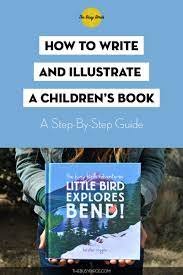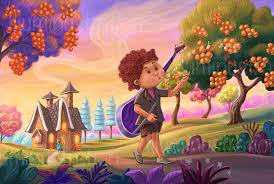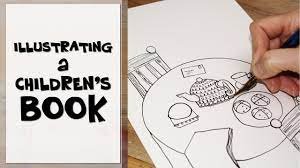Illustrating a children’s book is a magical journey that combines creativity, storytelling, and the boundless imagination of young minds. Embarking on the journey to illustrate a children’s book is a wondrous exploration into the realm of imagination, where words and images intertwine to craft enchanting tales that leave an indelible mark on young hearts.
Illustrations in children’s books are not mere embellishments but rather the vibrant brushstrokes that breathe life into the narrative, engaging the young reader in a visual dance that transcends the limitations of the written word.

In this guide, we will delve into the art and craft of illustrating a children’s book, uncovering the key principles, techniques, and considerations that transform a simple story into a visually captivating adventure. Whether you’re an aspiring illustrator or a seasoned artist, join us on this delightful journey as we unlock the secrets to bringing stories to life through the magical language of illustration.
H2: Understand the Story:
Before putting pen to paper or stylus to tablet, immerse yourself in the story. Read the manuscript multiple times, allowing the narrative to unfold in your mind. Gain a deep understanding of the characters, their personalities, and the overall theme of the book. This foundational comprehension will inform your illustrations and ensure a seamless visual narrative.
H2: Develop a Visual Style:
Every illustrator has a distinct style that sets their work apart. Experiment with different techniques, mediums, and visual elements to discover a style that complements the story’s tone. Consider the age group of your target audience; bright and bold colors may be suitable for younger children, while more intricate details may engage older readers. Consistency in style is crucial for a cohesive visual experience.
H2: Create Character Designs:
Children’s books often revolve around memorable characters. Begin by sketching and refining character designs, focusing on their appearance, expressions, and body language.
Ensure that characters are visually appealing and relatable to the target age group. Consistency in character design is vital for maintaining continuity throughout the book.
H2: Establish a Color Palette:
Colors play a pivotal role in shaping the mood and atmosphere of a children’s book. Select a color palette that complements the story’s theme and resonates with the intended emotions. Bright, cheerful colors can evoke a sense of joy, while muted tones may be suitable for more introspective or nostalgic narratives. Consistency in the color palette contributes to a visually harmonious book.
H2:Plan Page Layouts:
Consider the flow of the story when planning page layouts. Determine where illustrations will be placed, ensuring they complement the text and enhance the narrative. Pay attention to pacing, allowing for moments of suspense or quiet reflection. A well-thought-out layout guides the reader through the story, creating an immersive experience.
H2: Sketch Thumbnails:
Before diving into detailed illustrations, create small thumbnail sketches to plan the composition of each page. This step allows you to experiment with different perspectives, compositions, and focal points. 
Thumbnail sketches serve as a roadmap for the final illustrations, helping you refine your ideas and identify potential challenges early in the process.
H2: Focus on Emotion and Expression:
Children connect deeply with characters’ emotions and expressions. Capture the essence of each scene by emphasizing facial expressions, body language, and gestures. Use these elements to convey the characters’ feelings and enhance the emotional impact of the story. A strong emotional connection will resonate with young readers, making the book memorable and enjoyable.
H2: Add Details and Context:
While simplicity is key in children’s book illustrations, adding thoughtful details can enrich the storytelling experience. Consider the setting, time of day, and background elements that enhance the narrative. Subtle details provide context and invite readers to explore the illustrations, fostering a deeper connection with the story.
H2: Embrace Diversity and Inclusion:
Children’s books are powerful tools for promoting diversity and inclusion. Ensure that your illustrations represent a diverse range of characters, backgrounds, and experiences.
Throughout the illustration process, seek feedback from peers, friends, or even the target audience if possible. Fresh perspectives can provide valuable insights and help you refine your illustrations. Pay attention to constructive criticism and be open to making adjustments that enhance the overall quality of the visual storytelling.
H4: Conclusion:
Illustrating a children’s book is a magical collaboration between words and images, creating an enchanting world for young readers to explore. By understanding the story, developing a visual style, and paying attention to details, illustrators can bring characters and narratives to life in a way that captivates and inspires. Embrace the joy of storytelling through illustration, and watch as your creations become cherished companions for children on their literary adventures.Whether you’re a seasoned artist or a budding illustrator, bringing a children’s story to life through visuals requires a unique set of skills and considerations.